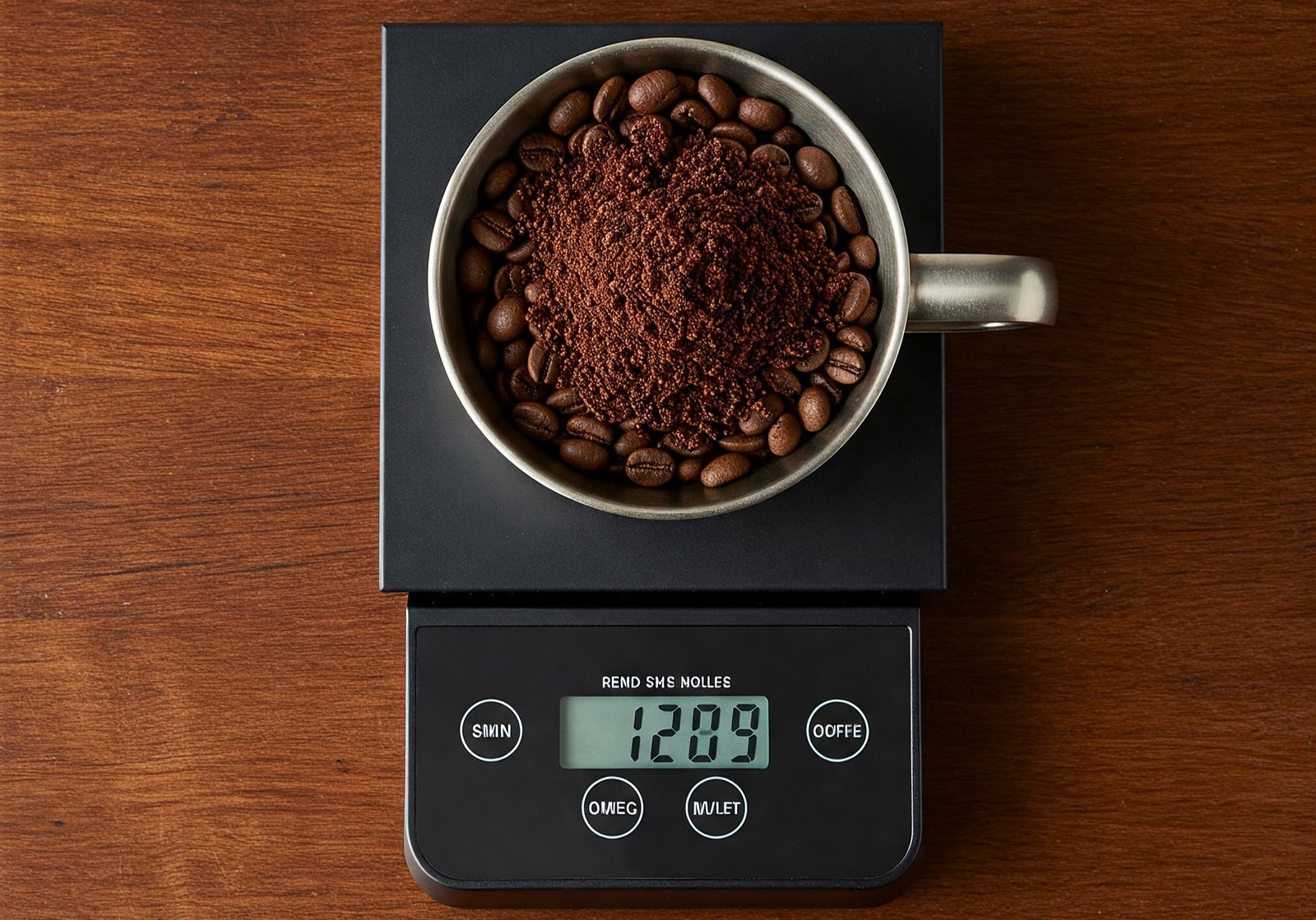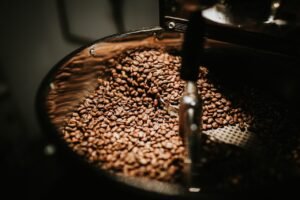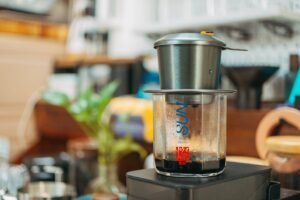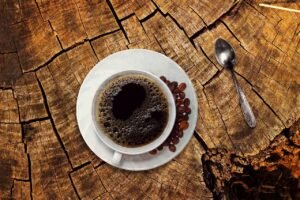Are you being misled about your morning cup of joe? As a specialty coffee professional with over a decade of experience, I’ve heard countless coffee misconceptions circulate among even the most devoted coffee drinkers. Today, we’re separating fact from fiction by tackling the ten most persistent coffee myths that might be affecting your brewing routine and enjoyment.
Myth #1: Dark Roast Coffee Contains More Caffeine
Many coffee drinkers gravitate toward dark roasts for an extra caffeine kick, but this widely-held belief is actually incorrect. When measured by volume, light roasts contain slightly more caffeine than dark roasts. Why? During the roasting process, beans lose mass (but not caffeine) as they’re exposed to high temperatures. Light roast beans are denser and slightly smaller, meaning you’ll use more of them when measuring by scoop rather than by weight.
For the most accurate caffeine content, weighing your coffee instead of using volume measurements ensures consistency in your brew strength. A standard 8oz cup typically contains between 80-100mg of caffeine regardless of roast level when properly measured.
Myth #2: Espresso Has More Caffeine Than Regular Coffee
The intense flavor and smaller serving size of espresso leads many to believe it delivers more caffeine than a standard cup of coffee. While espresso is indeed more concentrated, a typical 1oz shot contains approximately 63mg of caffeine compared to roughly 95mg in an 8oz cup of drip coffee.
If you’re seeking maximum caffeine, consider your total volume consumption rather than beverage type. Many specialty coffee shops now list caffeine content on their menus for transparency.
Myth #3: Coffee Dehydrates You
The notion that coffee acts as a diuretic that leaves you dehydrated persists despite scientific evidence to the contrary. While caffeine does have mild diuretic properties, the water content in coffee more than compensates for any fluid loss.
Research from the Institute for Scientific Information on Coffee confirms that moderate coffee consumption (3-5 cups daily) contributes to your daily fluid intake rather than depleting it. Your body adapts to regular caffeine consumption, further minimizing any diuretic effect.
Myth #4: The Best Coffee Must Be Served Piping Hot
Temperature significantly impacts flavor extraction and perception, but “as hot as possible” isn’t necessarily ideal. Specialty coffee professionals typically recommend brewing at 195-205°F (90-96°C) but serving between 135-150°F (57-65°C).
Extremely hot temperatures can mask the complex flavor compounds that make specialty coffee special. As coffee cools slightly, your palate can better detect the subtle notes of caramel, fruit, chocolate, or floral characteristics that define high-quality beans.
Myth #5: Coffee Stunts Growth
Perhaps one of the most enduring coffee myths, especially told to children, is that coffee consumption stunts growth. There is absolutely no scientific evidence supporting this claim. This misconception likely originated from past studies suggesting caffeine might affect calcium absorption, but subsequent research has debunked any significant connection.
Modern nutritional science confirms that genetic factors, overall nutrition, sleep quality, and physical activity are the primary determinants of growth and development—not your morning cup of coffee.
Nutritional Information: Coffee’s Health Benefits
Before continuing with more myths, let’s examine coffee’s nutritional profile when consumed without additives:
- Nearly zero calories
- Rich in antioxidants (polyphenols)
- Contains essential nutrients including riboflavin (B2), pantothenic acid (B5), manganese, potassium, and niacin (B3)
- Associated with reduced risk of type 2 diabetes, Parkinson’s disease, and certain liver conditions
- Linked to improved cognitive function and mood elevation
When adding milk, sugar, or flavored syrups, nutritional content changes dramatically. A black coffee transforms from virtually calorie-free to potentially containing hundreds of calories with added ingredients.
Affiliate Product Links
For readers looking to improve their coffee experience:
- Entry-level burr grinder
- Digital kitchen scale with 0.1g precision
- Electric gooseneck kettle with temperature control
- French press
- Pour-over starter kit
- Airtight coffee storage container
- Milk frother for homemade lattes
- Reusable travel mug for sustainable coffee on the go
- Espresso starter machine (Breville Bambino or Flair Neo)
Myth #6: Coffee Beans Stay Fresh Indefinitely
Many coffee lovers purchase beans in bulk to save money, not realizing that coffee is a perishable product. Once roasted, coffee beans begin releasing carbon dioxide and absorbing oxygen, initiating the staling process. Contrary to popular belief, storing beans in the refrigerator or freezer isn’t ideal for everyday use, as temperature fluctuations and moisture can degrade quality.
For optimal freshness, purchase small batches of whole beans within 2-3 weeks of their roast date, store them in an airtight container away from heat, light, and moisture, and grind only what you need immediately before brewing.
Myth #7: Lighter Crema Indicates Lower Quality Espresso
The thick, golden-brown layer atop an espresso shot—known as crema—is often misunderstood as the primary indicator of quality. While crema does signify freshness (as it’s formed by CO2 released from recently roasted beans), its thickness or color doesn’t necessarily correlate with flavor quality.
Many factors affect crema production: bean variety, processing method, roast level, and brewing parameters. Robusta beans produce more crema than Arabica despite generally lower cup quality, and some exceptional lighter roasts may produce less crema while delivering superior flavor complexity.
Myth #8: Arabica Beans Are Always Superior to Robusta
The coffee industry has widely promoted Arabica as the superior species, with Robusta often relegated to cheap blends and instant coffee. While Arabica typically offers more complexity and sweetness, high-quality Robusta beans can provide exceptional body, crema, and unique flavor characteristics valued in certain contexts.
Specialty-grade Robusta from regions like India and Uganda is gaining recognition for its quality potential, especially in espresso blends where it contributes body and crema. The true measure of quality lies in growing conditions, processing methods, and roasting expertise rather than species alone.

Myth #9: Decaf Coffee Contains No Caffeine
Many consumers choose decaffeinated coffee believing it to be completely caffeine-free. However, decaffeination processes typically remove about 97% of caffeine, leaving approximately 2-7mg per 8oz cup. While this amount is unlikely to cause noticeable effects in most people, those with extreme caffeine sensitivity should be aware.
Modern decaffeination methods like the Swiss Water Process and carbon dioxide process preserve more flavor compounds while effectively removing caffeine, making today’s decaf options significantly better than those of previous generations.
Myth #10: The Best Coffee Must Be Expensive
While specialty coffee often commands premium prices reflecting sustainable farming practices and exceptional quality, excellent coffee doesn’t necessarily require breaking the bank. Many factors influence price beyond cup quality, including packaging, marketing, and retail environment.
Knowledgeable consumers can find outstanding coffee values by:
- Purchasing directly from local roasters
- Exploring lesser-known growing regions producing excellent beans
- Buying larger quantities when available
- Learning proper brewing techniques to maximize extraction from any bean quality
Understanding what contributes to coffee quality—freshness, proper brewing parameters, water quality, and grinding immediately before brewing—often matters more than price point alone.
Conclusion
By dispelling these common coffee myths, you’re now equipped to make more informed decisions about your coffee purchases and preparation. The world of specialty coffee continues to evolve through scientific advancement and artisanal craftsmanship, offering ever-improving quality and variety to discerning consumers.
Whether you’re a casual drinker or dedicated enthusiast, understanding the truth behind these misconceptions will enhance your appreciation for what makes truly exceptional coffee. The next time you brew a cup, you’ll do so with greater knowledge and, hopefully, greater enjoyment.
This post may contain affiliate links. If you make a purchase through these links, I may earn a small commission at no extra cost to you.




